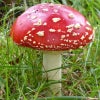


Posting on Scottish wildlife of all kinds. #ScottishWildlife #ScottishWildflowers #InvertFest #FungiUK #MammalsUK #ScottishBirds
This profile is from a federated server and may be incomplete. Browse more on the original instance.


Posting on Scottish wildlife of all kinds. #ScottishWildlife #ScottishWildflowers #InvertFest #FungiUK #MammalsUK #ScottishBirds
This profile is from a federated server and may be incomplete. Browse more on the original instance.